
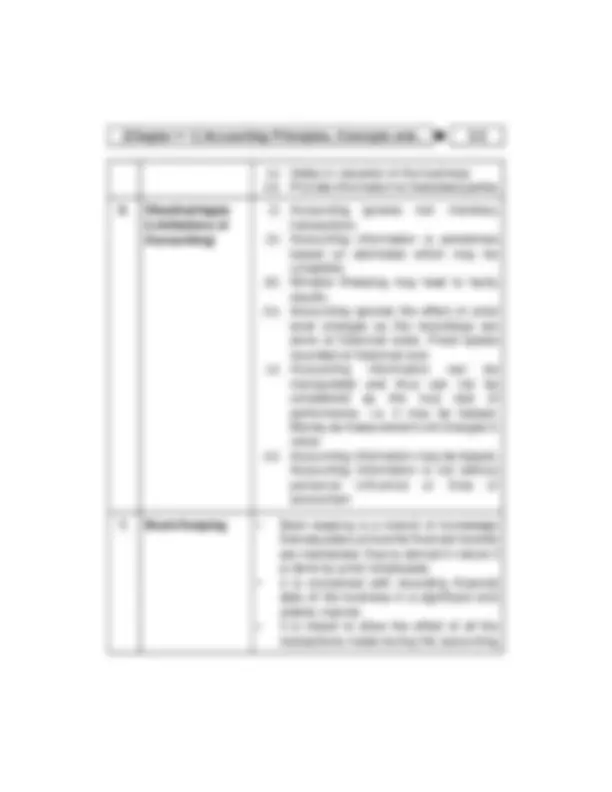
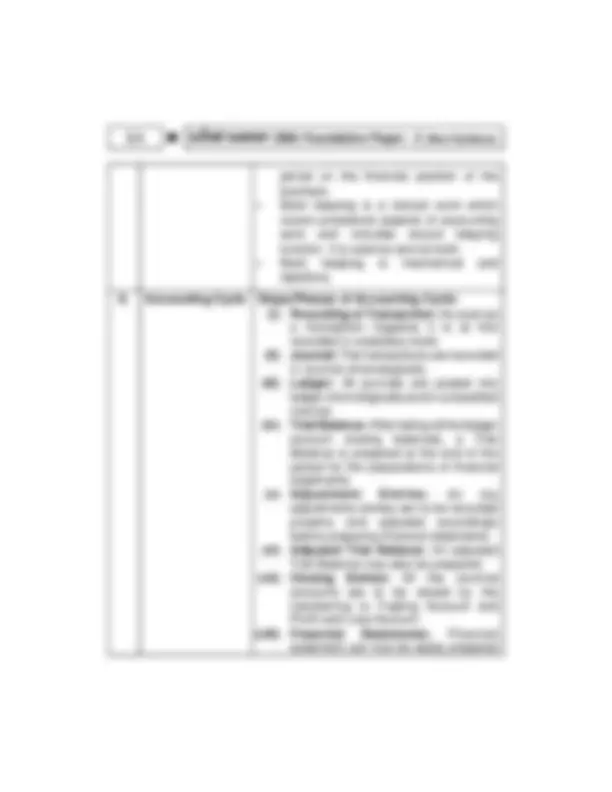
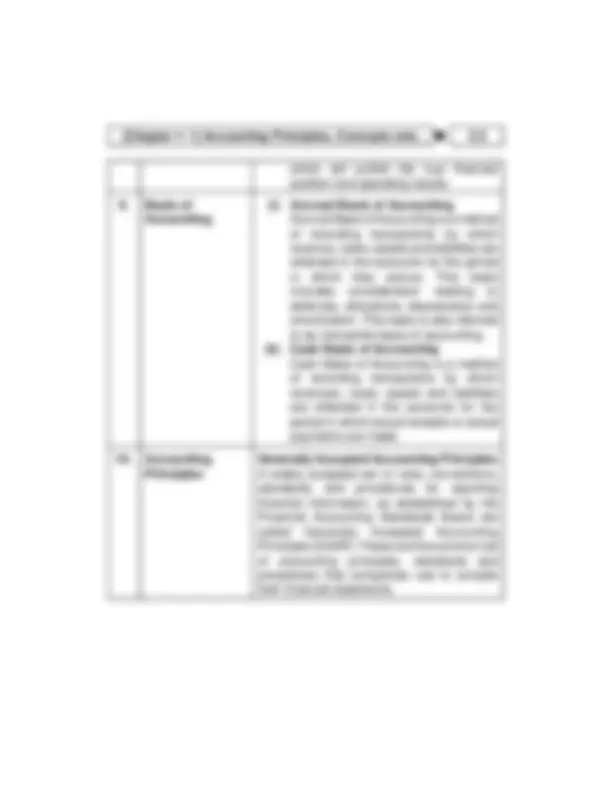
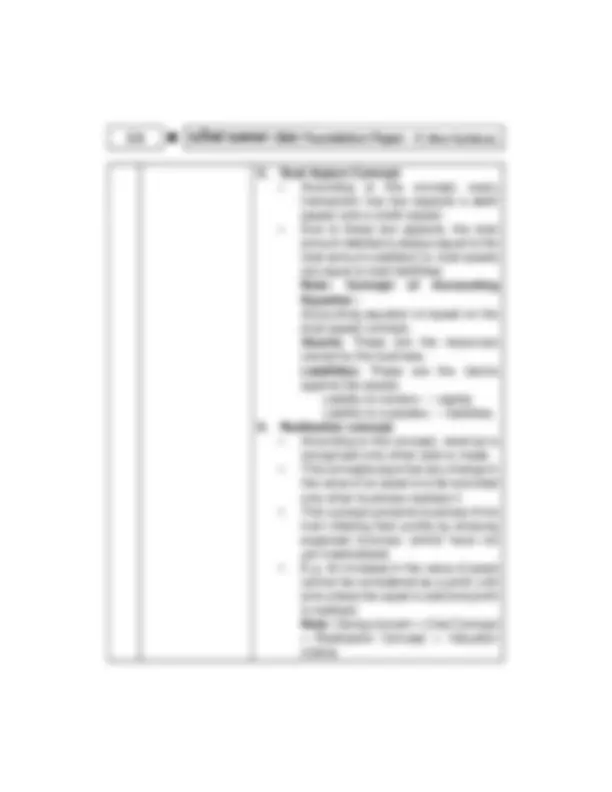
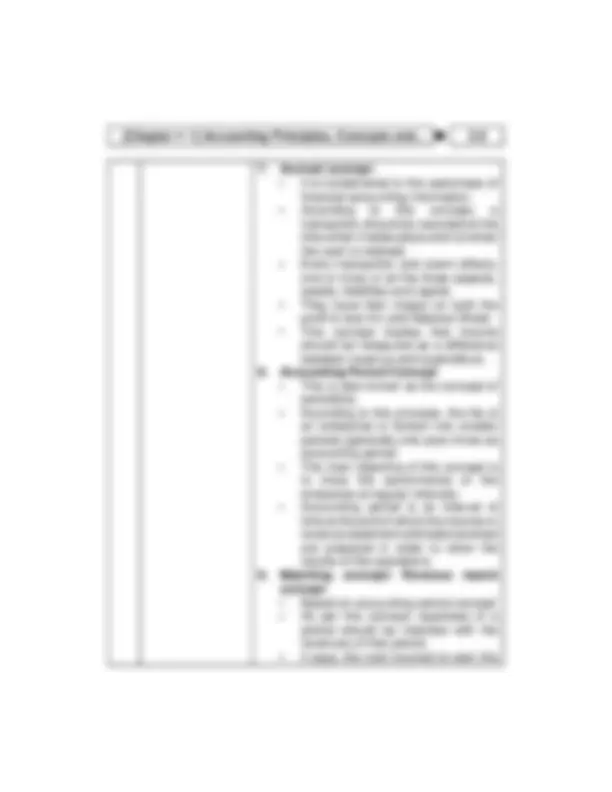
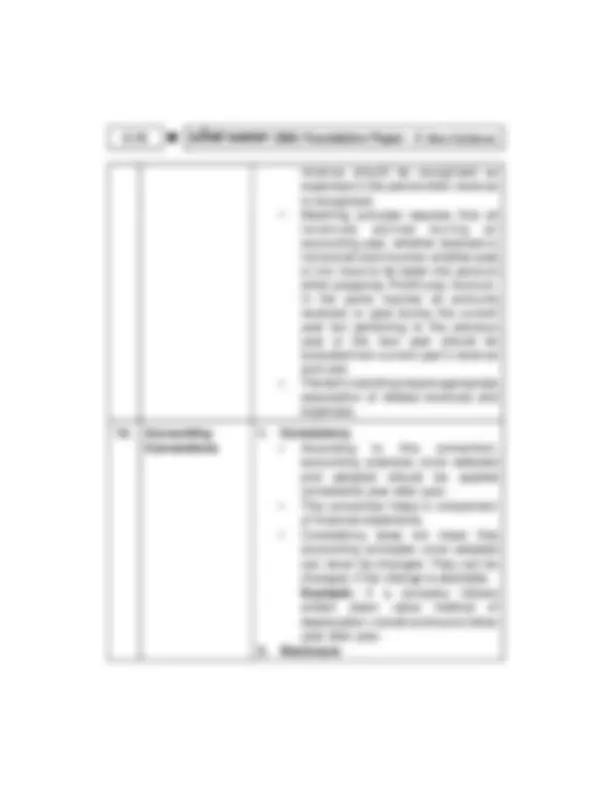
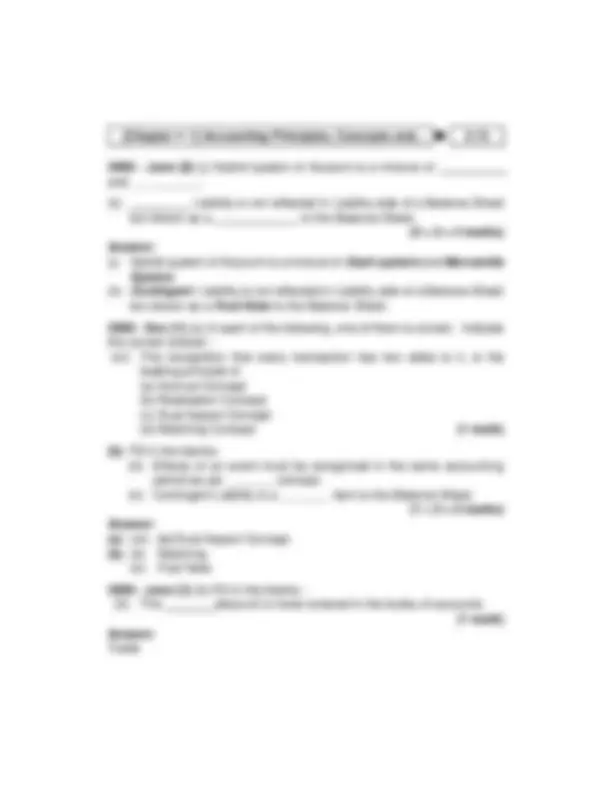
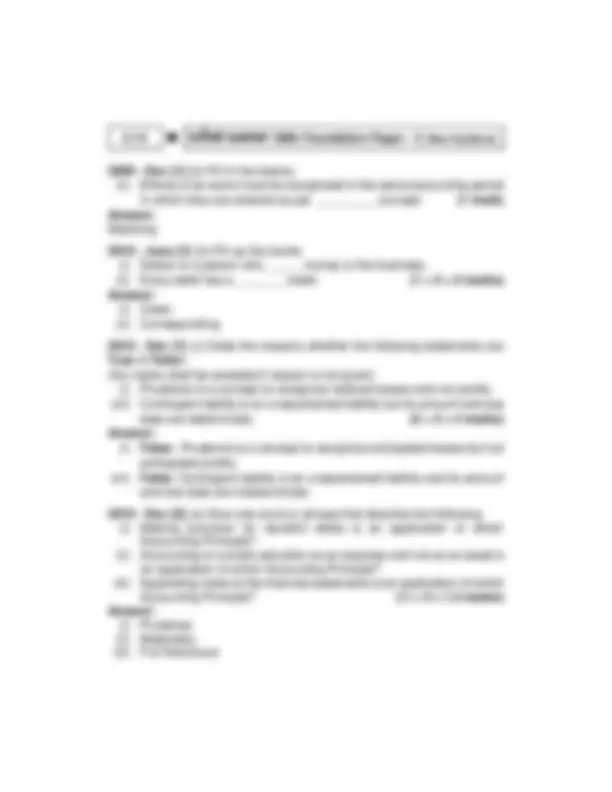

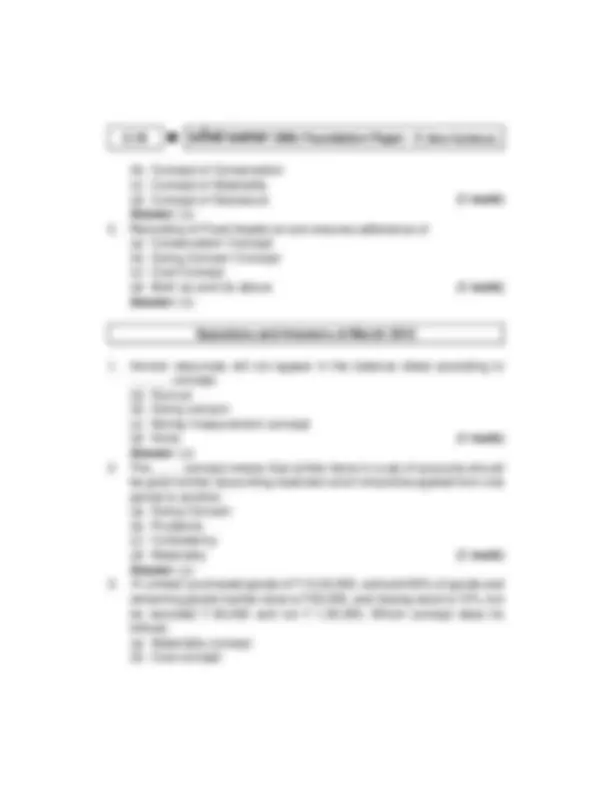
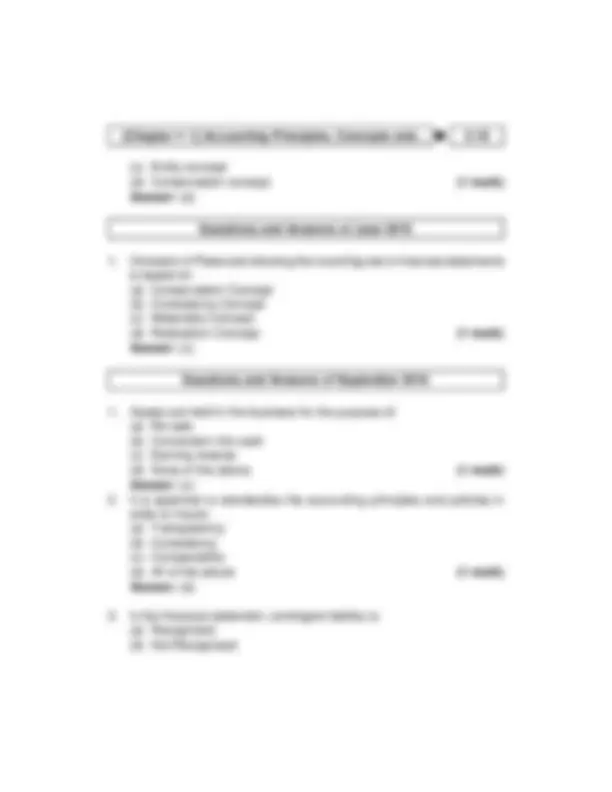
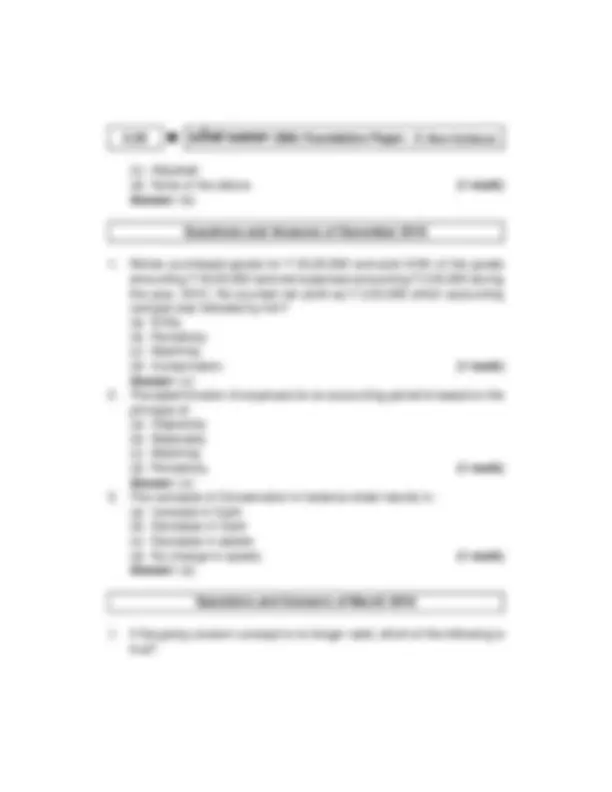
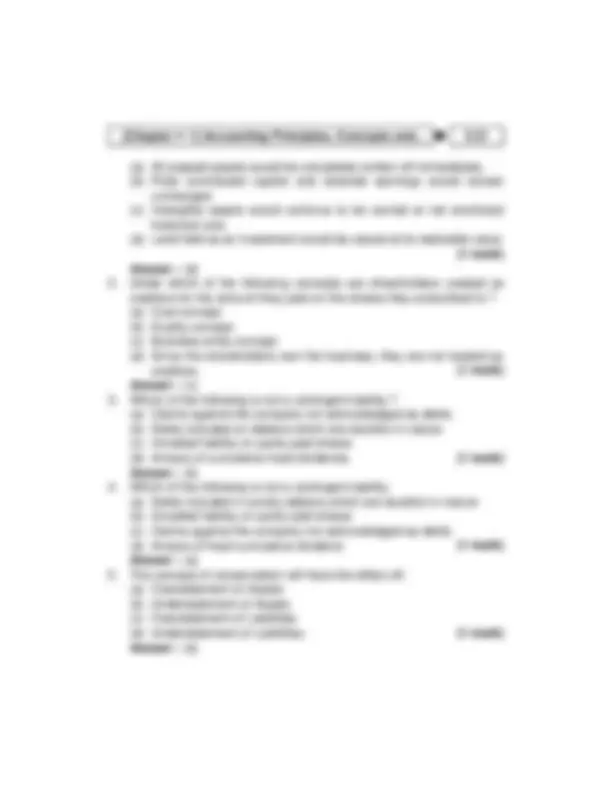
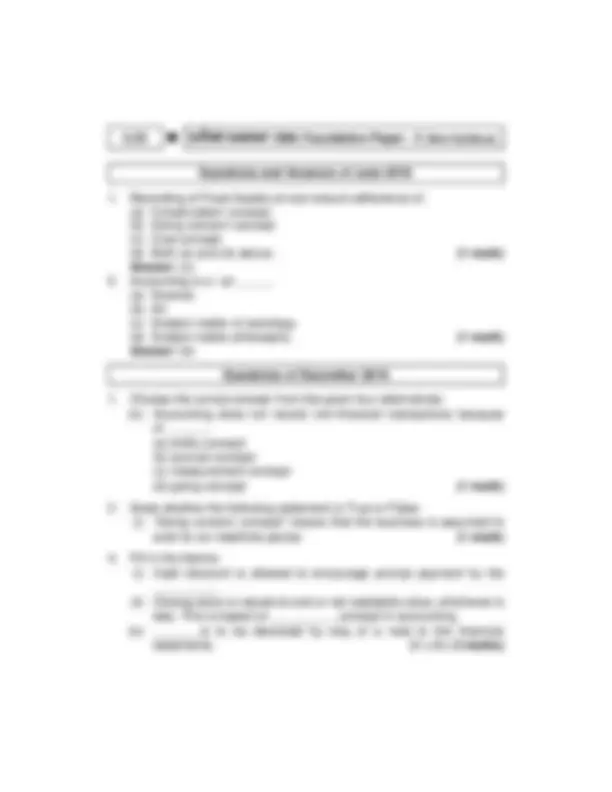
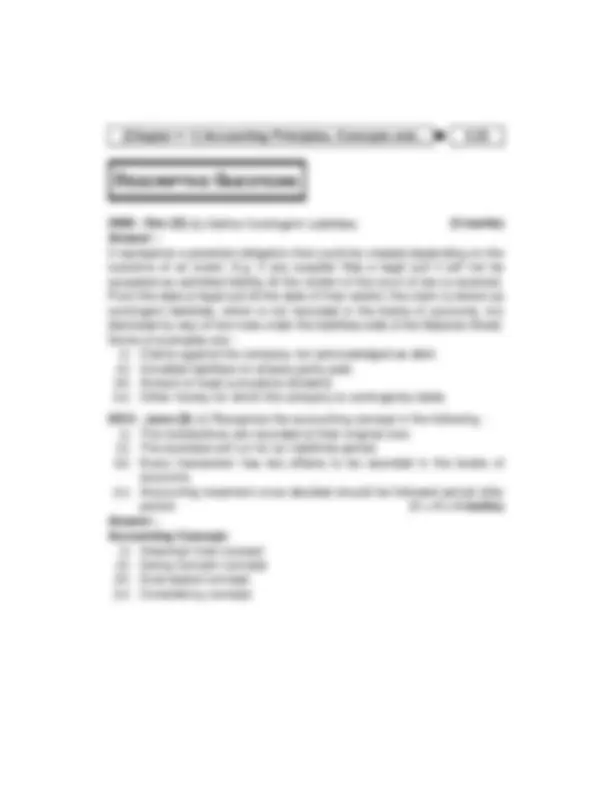
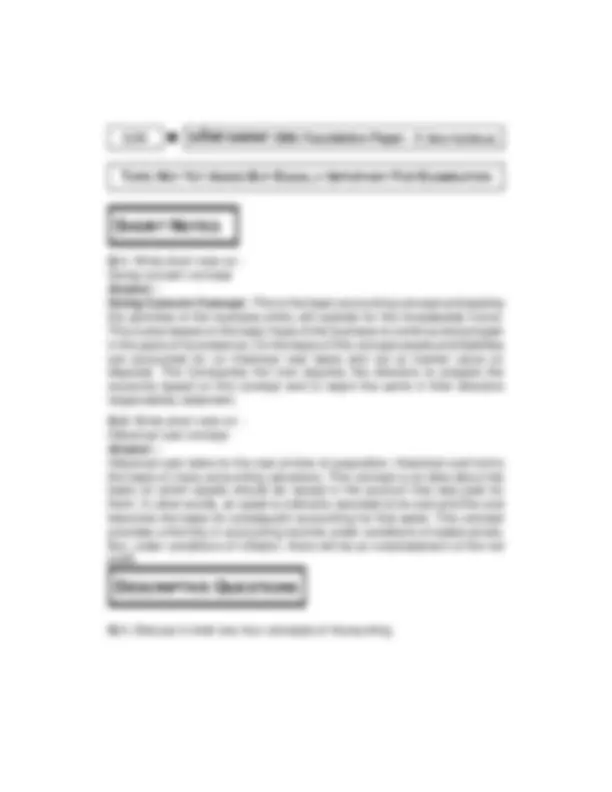
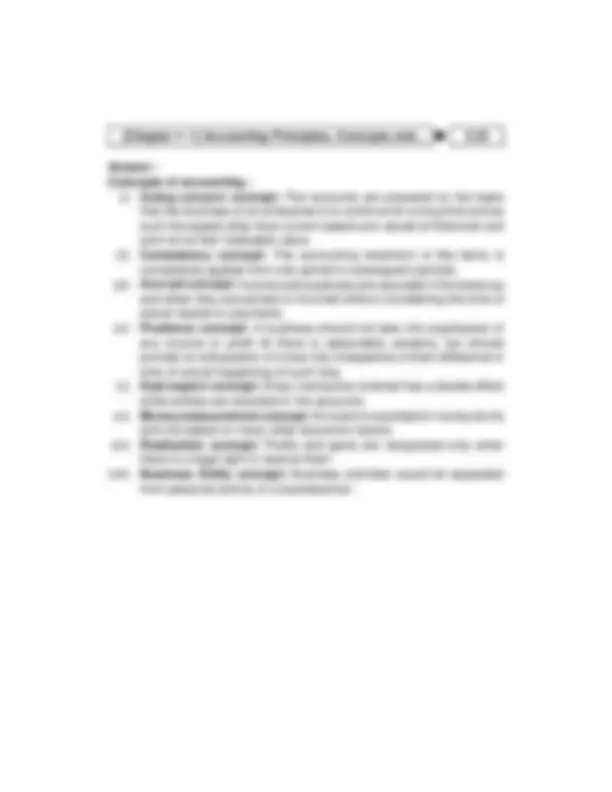


Study with the several resources on Docsity

Earn points by helping other students or get them with a premium plan


Prepare for your exams
Study with the several resources on Docsity

Earn points to download
Earn points by helping other students or get them with a premium plan
Community
Ask the community for help and clear up your study doubts
Discover the best universities in your country according to Docsity users
Free resources
Download our free guides on studying techniques, anxiety management strategies, and thesis advice from Docsity tutors
A widely accepted set of rules, conventions, standards, and procedures for reporting financial information, as established by the Financial Accounting ...
Typology: Exercises
1 / 25

This page cannot be seen from the preview
Don't miss anything!


















Definition of Accounting (^) Objectives of Accounting Function of Accounting Book-Keeping Accounting Cycle Accounting - Classification
Basis of Accounting (^) Basic Accounting Terms Accounting Principles Accounting Concepts and Conventions
CHAPTER AT A GLANCE
No.
Topic Important Highlights
1. Definition As per the definition of American Institute of Certified Public Accountants- Accounting is “the art of recording, classifying and summarizing in a significant manner and in terms of money, transactions and events which are in part at least, of a financial character and interpreting the results thereof”. 2. Characteristics (attributes) of Accounting
(i) Accounting records transactions and events which are of financial nature. (ii) Accounting is an art. (iii) It involves the following activities: recording, classifying and summarizing (iv) Accounting helps in determining the
financial position of an enterprise by analysing and interpreting the summarized records and communi- cating them to users. (v) Accounting information can be manipulated and thus cannot be considered as the true test of performance. (vi) It records transactions in terms of money.
3. Objectives of Accounting
(i) Maintaining accounting records (ii) Ascertaining profit/loss of the enterprise (iii) Ascertaining the financial position of the enterprise (iv) Providing accounting information to the users.
4. Functions of Accounting
(i) Maintaining systematic records (ii) Protecting and controlling business properties (iii) Ascertaining the operational profit/loss (iv) Ascertaining financial position (v) Facilitating rational decision making.
5. Advantages of Accounting
(i) Provides financial information about the business to interested parties (ii) Helps in comparison of financial results — Comparison of its own results of different years — Comparison of financial results with other firms in the industry (iii) Helps in decision making (iv) Accounting information can be used as an evidence in legal & Taxation matter
period on the financial position of the business. Book keeping is a clerical work which covers procedural aspects of accounting work and includes record keeping function. It is science and art both. Book keeping is mechanical and repetitive.
8. Accounting Cycle Steps/Phases of Accounting Cycle: (i) Recording of Transaction: As soon as a transaction happens it is at first recorded in subsidiary book. (ii) Journal: The transactions are recorded in Journal chronologically. (iii) Ledger: All journals are posted into ledger chronologically and in a classified manner. (iv) Trial Balance: After taking all the ledger account closing balances, a Trial Balance is prepared at the end of the period for the preparations of financial statements. (v) Adjustment Entries: (^) All the adjustments entries are to be recorded properly and adjusted accordingly before preparing financial statements. (vi) Adjusted Trial Balance: An adjusted Trial Balance may also be prepared. (vii) Closing Entries: All the nominal accounts are to be closed by the transferring to Trading Account and Profit and Loss Account. (viii) Financial Statements: Financial statement can now be easily prepared
[Chapter ^ 1] Accounting Principles, Concepts and... 2.
which will exhibit the true financial position and operating results.
9. Basis of Accounting
(i) Accrual Basis of Accounting Accrual Basis of Accounting is a method of recording transactions by which revenue, costs, assets and liabilities are reflected in the accounts for the period in which they accrue. This basis includes consideration relating to deferrals, allocations, depreciation and amortization. This basis is also referred to as mercantile basis of accounting. (ii) Cash Basis of Accounting Cash Basis of Accounting is a method of recording transactions by which revenues, costs, assets and liabilities are reflected in the accounts for the period in which actual receipts or actual payments are made.
10. Accounting Principles
Generally Accepted Accounting Principles A widely accepted set of rules, conventions, standards, and procedures for reporting financial information, as established by the Financial Accounting Standards Board are called Generally Accepted Accounting Principles (GAAP). These are the common set of accounting principles, standards and procedures that companies use to compile their financial statements.
[Chapter ^ 1] Accounting Principles, Concepts and... 2.
Transactions and events which cannot be expressed in terms of money, even if they affect the business, are not recorded in the books. Income or profit is the property of the business unless distributed among the owners. Example: Death of the director, disputes within the organisation, strikes, etc. may affect the working and profits of the business, but are not recorded in books of accounts. Measuring unit for money is the currency of the ruling country. Note: Entity and money measurement are considered as the basic concepts on which other procedural concepts depend.
4. Cost concept According to this concept, the value at which the various assets shall be recorded in the books shall be the historical cost or acquisition cost. This concept says that the assets shall be recorded at cost at the time of its purchase and its value shall be reduced systematically by charging depreciation. This concept helps to keep the statements free from personal bias or judgements. This concept is not beneficial for new investors as they are more interested in knowing the present worth of the business rather than its historical cost.
5. Dual Aspect Concept According to this concept, every transaction has two aspects a debit aspect and a credit aspect. Due to these two aspects, the total amount debited is always equal to the total amount credited (i.e. total assets are equal to total liabilities) Note: Concept of Accounting Equation : Accounting equation is based on the dual aspect concept. Assets: These are the resources owned by the business. Liabilities: These are the claims against the assets. Liability to owners — capital Liability to outsiders — liabilities. 6. Realisation concept According to this concept, revenue is recognized only when sale is made. This concepts says that any change in the value of an asset is to be recorded only when business realises it. (^) This concept prevents business firms from inflating their profits by showing expected incomes. (which have not yet materialised) (^) E.g. An increase in the value of asset cannot be considered as a profit until and unless the asset is sold and profit is realised. Note : Going concern + Cost Concept + Realization Concept = Valuation criteria
revenue should be recognized as expenses in the period when revenue is recognized. (^) Matching principle requires that all revenues earned during an accounting year, whether received or not and all cost incurred, whether paid or not, have to be taken into account while preparing Profit/Loss Account. In the same manner all amounts received or paid during the current year but pertaining to the previous year or the next year should be excluded from current year’s revenue and cost. The term matching means appropriate association of related revenues and expenses.
12. Accounting Conventions 1. Consistency According to this convention, accounting practices once selected and adopted should be applied consistently year after year. (^) This convention helps in comparison of financial statements. (^) Consistency does not mean that accounting principles once adopted can never be changed. They can be changed, if the change is desirable. Example: If a company follows written down value method of depreciation, it shall continue to follow year after year. 2. Disclosure
[Chapter ^ 1] Accounting Principles, Concepts and... 2.
This is also known as the “Full disclosure” principle. According to this convention, all significant information should be fully and fairly disclosed in the financial statements. Ensuring this convention increases the relevance and reliability of financial statements. The companies act make ample provision for disclosure of essential information.
3. Conservatism The concept of conservatism states that we should not anticipate a profit but should provide for all possible losses while preparing financial statements. It enables the financial statements to show a realistic picture of the state of affairs of the enterprise. This convention understates the assets and overestimates the liabilities. Financial statement are usually drawn up on a conservative basis. Choice between two method of valuing an asset the accountant should choose a method which leads to lesser value. Example: Valuing stock at lower of cost or market value, making provision for doubtful debts in anticipation of debts becoming bad, are done to comply with the convention of conservatism. 4. Materiality
[Chapter ^ 1] Accounting Principles, Concepts and... 2.
2008 - June [2] (j) Hybrid system of Account is a mixture of and __________.
(k) Liability is not reflected in Liability side of a Balance Sheet but shown as a to the Balance Sheet. (2 × 2 = 4 marks) Answer: (j) Hybrid system of Account is a mixture of Cash system and Mercantile System. (k) Contingent Liability is not reflected in Liability side of a Balance Sheet but shown as a Foot Note to the Balance Sheet.
2008 - Dec [1] (a) In each of the following, one of them is correct. Indicate the correct answer : (vii) The recognition that every transaction has two sides to it, is the leading principle of (a) Accrual Concept (b) Realisation Concept (c) Dual Aspect Concept (d) Matching Concept (1 mark)
(b) Fill in the blanks: (iii) Effects of an event must be recognized in the same accounting period as per _______ concept. (iv) Contingent Liability is a _______ item to the Balance Sheet. (1 × 2 = 2 marks) Answer: (a) (vii) (c) Dual Aspect Concept (b) (iii) Matching (iv) Foot Note
2009 - June [1] (b) Fill in the blanks : (iii) The discount is never entered in the books of accounts. (1 mark) Answer: Trade
2009 - Dec [1] (b) Fill in the blanks: (ii) Effects of an event must be recognised in the same accounting period in which they are entered as per _________ concept. (1 mark) Answer: Matching
2010 - June [1] (b) Fill up the banks: (i) Debtor is a person who _____ money to the business. (ii) Every debit has a _______ credit. (1 × 2 = 2 marks) Answer: (i) Owes (ii) Corresponding
2010 - Dec [1] (c) State the reasons whether the following statements are True of False: (No marks shall be awarded if reason is not given) (i) Prudence is a concept to recognize realized losses and not profits. (vii) Contingent liability is an unascertained liability but its amount and due date are determinate. (2 × 2 = 4 marks) Answer: (i) False: Prudence is a concept to recognize anticipated losses but not anticipated profits. (vii) False: Contingent liability is an unascertained liability and its amount and due date are indeterminate.
2010 - Dec [2] (a) Give one word or phrase that describe the following: (i) Making provision for doubtful debts is an application of which Accounting Principle? (ii) Accounting of a small calculator as an expense and not as an asset is an application of which Accounting Principle? (iii) Appending notes to the financial statements is an application of which Accounting Principle? (½ × 3 = 1.5 marks) Answer: (i) Prudence (ii) Materiality (iii) Full Disclosure
(c) State with reasons whether the following statement is True or False: (ii) Prudence is the concept to anticipate and recognize losses. (2 marks) Answer: (b) (^) (ii) Conservatism (iii) Trade (c) (ii) True: Profits are not anticipated but losses are provided as a matter of conservatism. The exercise of prudence in selection of accounting policies is to ensure that (i) profits and assets are not overstated (ii) losses and liabilities are not understated.
2012 - June [5] (a) In each of the following one of the alternatives is correct, indicate the correct one : (i) Which method of costing is used for determination of costs for printing industry? (a) Process Costing (b) Operating Costing (c) Batch Costing (d) Job Costing (1 mark) Answer: (d) Job Costing
2012 - Dec [1] (c) State whether the following statements are ‘True’ or ‘False’: (v) A sale is recognised when goods are sent to customer. (vii) A business transaction is always recorded in terms of money. (1 × 2 = 2 marks) Answer: (v) False (vii) True
[Chapter ^ 1] Accounting Principles, Concepts and... 2.
Questions and Answers of September 2014
Questions and Answers of December 2014
[Chapter ^ 1] Accounting Principles, Concepts and... 2.
(c) Entity concept (d) Conservatism concept (1 mark) Answer: (d)
Questions and Answers of June 2015
Questions and Answers of September 2015
(c) Adjusted (d) None of the above. (1 mark) Answer: (b)
Questions and Answers of December 2015
25,00,000 and sold 4/5th of the goods amounting 18,00,000 and met expenses amounting 2,50,000 during the year, 2013. He counted net profit as 3,50,000 which accounting concept was followed by him? (a) Entity (b) Periodicity (c) Matching (d) Conservation. (1 mark) Answer: (c)Questions and Answers of March 2016